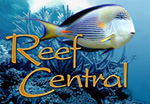DrHarryLopez
One Happy Reefer
I thought people may want to see how these eggs look like if their concerned they may have them on their corals.
This weekend I removed a few colonies (two of which were infected.)
I dipped all the corals in CoralRx as directed, then inspected them carefully for eggs.
Larry Jackson colony placed into a basin

Turned upside down to reveal the eggs, which usually be on the coral skeleton

Another view

Closer

and even closer

This weekend I removed a few colonies (two of which were infected.)
I dipped all the corals in CoralRx as directed, then inspected them carefully for eggs.
Larry Jackson colony placed into a basin

Turned upside down to reveal the eggs, which usually be on the coral skeleton

Another view

Closer

and even closer

